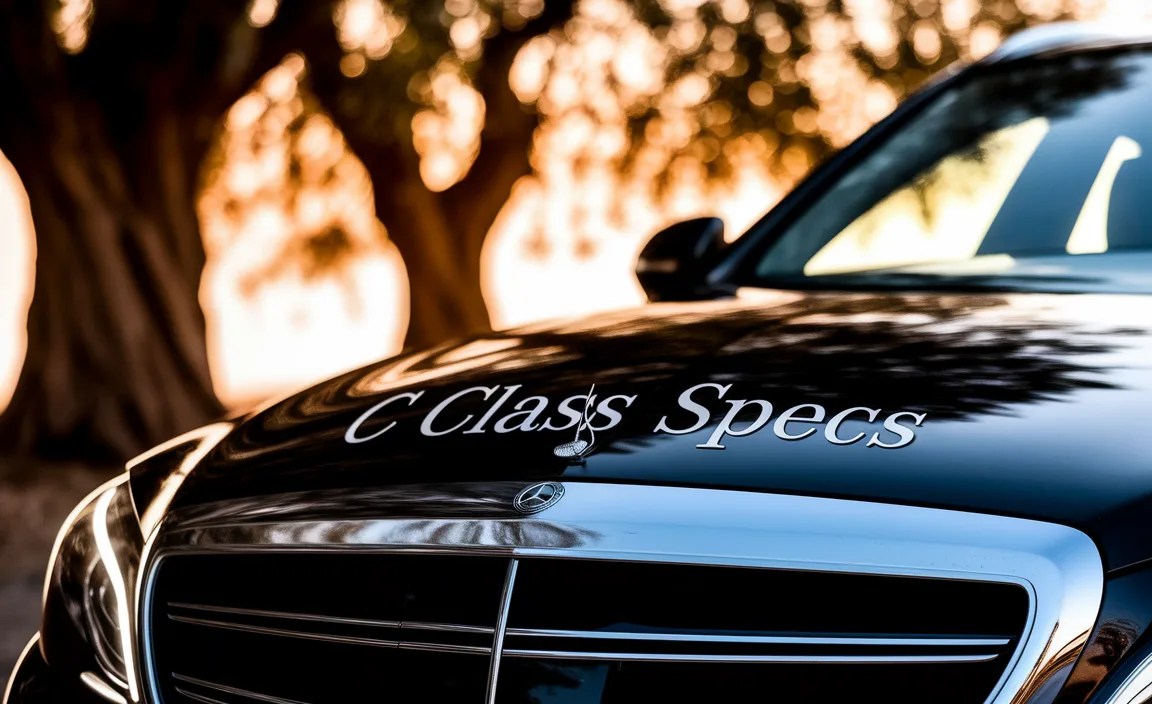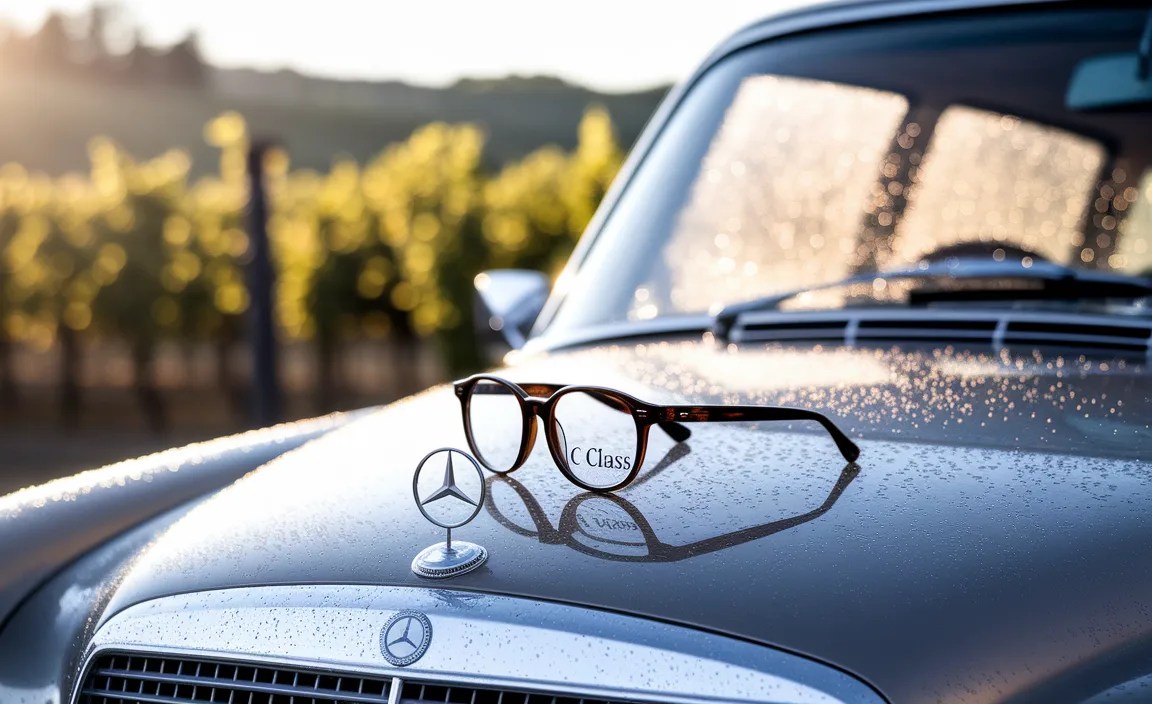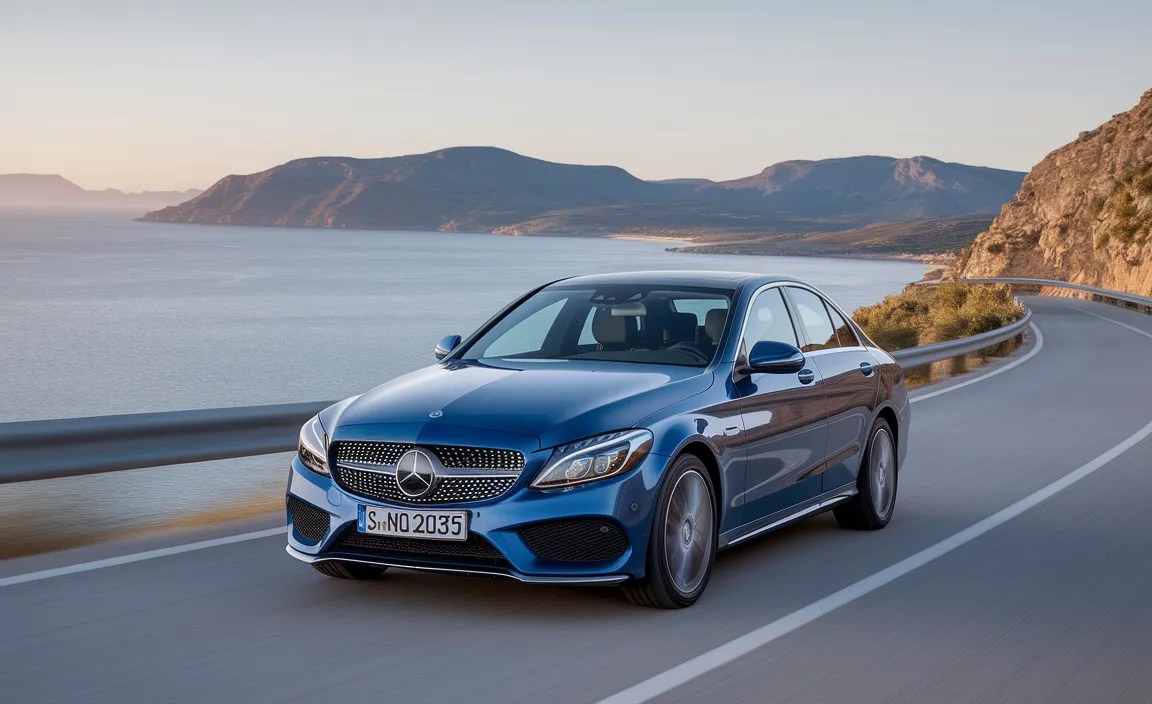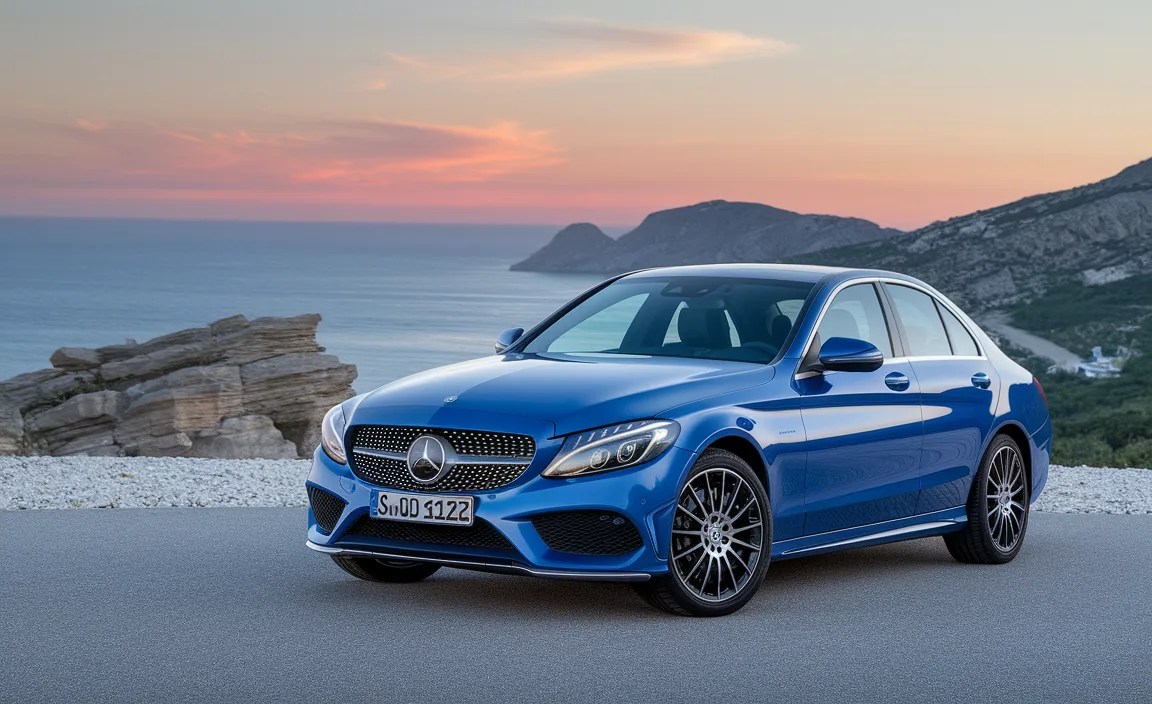C Class Specs: Ultimate Performance Revealed
The Mercedes-Benz C-Class offers impressive performance across its range, balancing refined luxury with dynamic driving. From the efficient base models to the exhilarating AMG variants, C-Class specs deliver a thrilling experience tailored to various driving needs. Discover engine options, handling, and technology that define its ultimate performance.

The Mercedes-Benz C-Class is a name synonymous with sophisticated driving, but what lies beneath its elegant exterior? Many enthusiasts wonder about the specifics – the horsepower, the acceleration, the engineering that makes a C-Class truly special. If you’ve ever felt that surge of power or admired its agile handling and thought, “What exactly makes it perform like this?”, you’re not alone. Understanding the C-Class specs is key to appreciating its performance. This guide will break down everything you need to know, from its heart – the engine – to its soul – the driving dynamics. Get ready to uncover the ultimate performance revealed in the C-Class!
Unveiling the Heart of the C-Class: Engine Options and Power
At the core of any vehicle’s performance is its engine. The Mercedes-Benz C-Class lineup boasts a diverse range of powertrains, each designed to deliver a distinct blend of efficiency and exhilarating performance. Whether you’re looking for everyday usability or track-day thrills, there’s a C-Class engine for you. We’ll explore the common engine types you’ll find, from the turbocharged four-cylinders to the hand-built V8s of the AMG models.

The Foundation: Turbocharged Four-Cylinder Engines
For many C-Class models, including the popular C 300, Mercedes-Benz employs sophisticated turbocharged four-cylinder engines. These powerplants are engineered for a remarkable balance of fuel economy and brisk acceleration. They often feature advanced technologies like mild-hybrid systems to provide an extra boost of power and efficiency during certain driving conditions.
Key Features of Four-Cylinder C-Class Engines:
- Turbocharging: This technology forces more air into the engine, allowing for greater power output from a smaller displacement.
- Direct Injection: Precisely injects fuel into the combustion chamber for improved efficiency and power.
- Mild-Hybrid Technology (EQ Boost): A small electric motor assists the gasoline engine, providing smoother acceleration and reducing fuel consumption. This system can temporarily add horsepower and torque, enhancing drivability.
- Impressive Horsepower and Torque: Even in base models, these engines offer more than enough power for confident highway merging and spirited driving.
The Pinnacle: AMG’s Hand-Built V8 Powerhouses (Historically)
For those craving the ultimate in performance, Mercedes-AMG has historically offered potent V8 engines within the C-Class lineage. These engines are not just powerful; they are often hand-built by a single technician (“one man, one engine”) in Affalterbach, Germany, a testament to their craftsmanship and exclusivity. While newer AMG C-Class models are transitioning to V8 hybrid powertrains, understanding these V8s is crucial for appreciating the performance legacy.
Key Characteristics of AMG V8 Engines:
- Larger Displacement: Typically 4.0-liter V8 twin-turbo engines, offering immense power potential.
- Hand-Built Craftsmanship: The “one man, one engine” philosophy ensures meticulous attention to detail and quality.
- Exceptional Horsepower and Torque: Delivering supercar-rivaling figures that transform the C-Class into a performance machine.
- Distinctive Sound: The rumble and roar of an AMG V8 is an iconic part of the driving experience.
Looking Ahead: The Future of C-Class Powertrains
Mercedes-Benz is continuously evolving its powertrains. For the latest C-Class generations, particularly the AMG models, you’ll find a strong emphasis on hybrid technology. This includes plug-in hybrid systems that offer significant electric-only range alongside blistering V8 performance, pushing the boundaries of what a luxury performance sedan can be. These hybrid systems often feature electric turbochargers and advanced battery technology to provide instant torque and sustained power delivery.
Transmission and Drivetrain: Putting Power to the Pavement
Having a powerful engine is only part of the equation. How that power is delivered to the wheels is equally important for performance. The C-Class lineup offers a variety of transmission and drivetrain options that contribute significantly to its driving dynamics and overall feel.

Automatic Transmissions: Smoothness Meets Speed
Most C-Class models come equipped with sophisticated automatic transmissions. These are designed to seamlessly shift gears, providing a comfortable ride and maximizing efficiency. For performance-oriented models, these automatic transmissions are tuned for quicker shifts and more direct gear engagement.
- 9G-TRONIC Automatic Transmission: Found in many standard C-Class models, this nine-speed automatic offers smooth, almost imperceptible gear changes and helps optimize fuel economy.
- AMG SPEEDSHIFT MCT (Multi-Clutch Transmission): In AMG models, this transmission is a performance-tuned automatic designed for rapid gear changes, offering a more visceral connection between the driver and the engine. It can feel more direct and responsive under aggressive driving.
Drivetrain Options: Rear-Wheel vs. All-Wheel Drive
The choice of drivetrain significantly impacts how the C-Class handles. Mercedes-Benz offers both rear-wheel-drive (RWD) and all-wheel-drive (AWD) configurations, each with its own advantages.
- Rear-Wheel Drive (RWD): Traditionally favored for sporty driving dynamics, RWD allows for a more balanced weight distribution and can offer a more engaging steering feel. It’s often the standard on many C-Class models.
- 4MATIC All-Wheel Drive (AWD): Mercedes-Benz’s 4MATIC system intelligently distributes power between the front and rear wheels. This enhances traction and stability, especially in adverse weather conditions like rain and snow. For performance models, 4MATIC can be tuned to send a rear-biased power split for a more dynamic feel.
Dymanic Select: Tailoring Your Driving Experience
Integrated with the transmission and engine management is the DYNAMIC SELECT system. This feature allows the driver to choose different driving modes, such as Comfort, Sport, Sport+, Eco, and Individual. Each mode alters throttle response, transmission shift points, steering feel, and suspension stiffness (if equipped with adaptive dampers) to suit the driver’s preferences and the driving conditions.
Chassis and Suspension: The Foundation of Handling
A car’s ability to hug corners, absorb road imperfections, and provide a stable ride boils down to its chassis and suspension. The C-Class is renowned for its sophisticated engineering in this area, offering a blend of comfort and sporting capability.
Multi-Link Suspension Architecture
Both front and rear suspensions typically employ a multi-link setup. This design uses multiple control arms to precisely manage wheel movement, leading to improved handling, comfort, and stability. The engineers at Mercedes-Benz meticulously tune these systems to achieve the desired balance for each C-Class model.
Benefits of Multi-Link Suspension:
- Superior Wheel Control: Keeps the tires in optimal contact with the road.
- Improved Ride Comfort: Effectively isolates the cabin from road shocks.
- Enhanced Handling and Stability: Contributes to a planted and predictable feel during cornering.
Adaptive Damping Systems
Higher-spec C-Class models, and especially AMG variants, often feature adaptive damping systems. These systems electronically adjust the shock absorbers’ stiffness in real-time based on road conditions and driving input. This means the car can be soft and comfortable on a highway cruise but firm up for a more controlled and responsive feel during spirited driving.
These systems work in conjunction with the DYNAMIC SELECT modes, allowing the suspension to transform from plush to sporty in seconds. For a deeper dive into suspension technology, you can explore resources like the SAE International’s technical papers on chassis systems.
AMG Ride Control and AMG Active Ride Control
For the ultimate in sporty handling, AMG models feature specialized suspension systems. AMG RIDE CONTROL provides electronically controlled damping with two manually selectable modes (Comfort and Sport). AMG ACTIVE RIDE CONTROL takes this further with active roll stabilization, hydraulically connecting the anti-roll bars to counteract body roll during cornering, providing a flatter and more dynamic cornering experience.

Braking System: Stopping Power You Can Trust
Performance vehicles are not just about going fast; they’re also about stopping just as effectively. The C-Class sports robust braking systems designed to provide confident stopping power under various conditions.
Standard C-Class Brakes
Even standard C-Class models feature well-engineered disc brakes on all four wheels. These are designed to handle the demands of daily driving, offering reliable and progressive stopping power.
High-Performance AMG Brakes
AMG models are equipped with significantly upgraded braking systems to match their prodigious power. These often include larger, ventilated, and drilled brake discs, along with multi-piston calipers. These robust systems are designed to withstand repeated hard braking from high speeds without experiencing fade, ensuring consistent performance on the road and track.
Regenerative Braking (Hybrid Models)
For C-Class models equipped with hybrid powertrains, regenerative braking plays a crucial role. When you lift off the accelerator or press the brake pedal, the electric motor acts as a generator, converting kinetic energy back into electrical energy to recharge the battery. This not only improves efficiency but also contributes to braking force, working in harmony with the conventional friction brakes.
Aerodynamics and Design: Performance Through Form
The C-Class’s sleek design isn’t just for aesthetics; it’s also functional. Aerodynamics play a vital role in a car’s performance, influencing stability, efficiency, and high-speed handling.
Streamlined Bodywork
Mercedes-Benz designers meticulously shape the C-Class body to minimize drag. Features like carefully sculpted front and rear bumpers, integrated spoilers, and a smooth underbody reduce air resistance, allowing the car to cut through the air more efficiently. This translates to better fuel economy and higher top speeds.
AMG Aerodynamic Enhancements
AMG models often feature specific aerodynamic enhancements designed to improve downforce and stability at high speeds. These can include more aggressive front and rear spoilers, larger air intakes for cooling, and often a rear diffuser to manage airflow beneath the car. These elements are not just visual upgrades; they are engineered to optimize the car’s aerodynamic performance.
Technology Integration: Enhancing the Driving Experience
Beyond raw mechanical performance, modern C-Class vehicles are packed with technology that enhances safety, comfort, and the overall driving experience. From driver assistance systems to infotainment, technology is an integral part of the C-Class’s appeal.
MBUX Infotainment System
The Mercedes-Benz User Experience (MBUX) infotainment system is a centerpiece of the C-Class interior. It features intuitive voice control (“Hey Mercedes”), a large touchscreen display, and seamless smartphone integration. This system keeps you connected and informed without detracting from the driving experience.
Driver Assistance Systems
Mercedes-Benz is a leader in automotive safety, and the C-Class is equipped with a suite of advanced driver assistance systems. These can include adaptive cruise control, lane-keeping assist, blind-spot monitoring, and automatic emergency braking. These technologies not only enhance safety but can also reduce driver fatigue on long journeys.
AGILE HANDLING Package
Some C-Class models offer the AGILITY CONTROL suspension, which automatically adjusts damping based on road surface conditions, providing an optimal balance between ride comfort and handling. Combining this with DYNAMIC SELECT further refines the driving experience, making the C-Class incredibly versatile.
Performance Metrics: What the Specs Mean in Real Life
Understanding engine sizes and horsepower figures is one thing, but how do these C-Class specs translate into real-world performance? Let’s look at some key metrics.
Acceleration (0-60 mph)
The time it takes for a C-Class to accelerate from 0 to 60 miles per hour is a common benchmark for performance. This figure varies significantly based on the engine and drivetrain.
General Acceleration Estimates:
- C 300: Expect 0-60 mph times in the mid-5 to low-6 second range, offering brisk acceleration for everyday driving.
- AMG C 43: This model typically achieves 0-60 mph in the low-4 second range, showcasing significant V6 performance.
- AMG C 63 (and its successors): These performance titans can hit 0-60 mph in the mid-3 second range, rivaling many sports cars. Newer hybrid AMG models often achieve even quicker times.
Top Speed
While most drivers rarely reach a car’s top speed, it’s an indicator of its ultimate performance capability. C-Class models are typically electronically limited to a certain top speed for safety and tire limitations.
- Standard C-Class models are usually limited to around 130 mph.
- AMG models often have their top speed limited to 155 mph, but can be optionally raised to 180 mph with the AMG Driver’s Package.
Fuel Economy
Performance doesn’t always mean high fuel consumption, especially with modern engine technology. Mercedes-Benz balances power with efficiency.
Fuel economy figures are estimates and vary greatly depending on driving style, conditions, and specific model year. For example, a C 300 might achieve EPA estimates in the range of 24 MPG city / 33 MPG highway, while high-performance AMG models will have significantly lower figures.
For the most accurate EPA estimated fuel economy for any specific C-Class model, visit the US Department of Energy’s fuel economy website.
Comparing C-Class Performance: Key Models
To truly understand the C-Class specs and their performance implications, let’s look at a few representative models and how their specifications differ.
C-Class Models at a Glance (Illustrative Examples)
This table provides a simplified overview of some typical C-Class offerings. Note that specifications can vary by model year and region.
| Model | Engine Type | Approx. Horsepower | Approx. Torque (lb-ft) | 0-60 mph (Est.) | Drivetrain |
|---|---|---|---|---|---|
| C 300 | 2.0L Turbo 4-Cylinder (often with EQ Boost) | 255 hp | 295 lb-ft | 5.7 – 6.0 seconds | RWD / 4MATIC AWD |
| AMG C 43 | 3.0L Twin-Turbo V6 (older gens) / 2.0L Turbo 4-Cylinder Hybrid (newer gens) | 385 hp (older gen) / ~402 hp combined (newer gen) | 384 lb-ft (older gen) / ~500 lb-ft combined (newer gen) | 4.3 – 4.5 seconds | 4MATIC AWD |
| AMG C 63 (e.g., W205 generation) | 4.0L Twin-Turbo V8 | 469 – 503 hp | 479 – 516 lb-ft | 3.9 – 4.1 seconds | 4MATIC+ AWD (rear-biased) |
| AMG C 63 S E PERFORMANCE (current generation) | 2.0L Turbo 4-Cylinder Hybrid + Electric Motor | ~671 hp combined | ~730 lb-ft combined | ~3.4 seconds | 4MATIC+ AWD |
Note: Horsepower, torque, and acceleration figures are approximate and can vary by model year. Always refer to the official specifications for your specific vehicle.
AMG C 63 S E PERFORMANCE: A Paradigm Shift
The latest generation of the AMG C 63 S E PERFORMANCE marks a significant evolution. It swaps the traditional V8 for a highly potent 2.0-liter four-cylinder engine boosted by an electric turbocharger, paired with a powerful electric motor on the rear axle. This hybrid setup delivers unprecedented power and torque figures, pushing the C-Class into hypercar-rivaling territory in terms of acceleration, while also offering improved efficiency and electric-only driving capability.
Frequently Asked Questions About C-Class Specs
1. What engine options are available in the Mercedes-Benz C-Class?
The Mercedes-Benz C-Class primarily offers a 2.0L turbocharged inline-four engine with mild-hybrid EQ Boost technology. Higher-performance trims, like the AMG C 43 and AMG C 63 S E Performance, include upgraded turbocharged or hybrid-assisted powertrains.
2. How fast can the Mercedes-Benz C 300 accelerate?
The C 300 Sedan can accelerate from 0 to 60 mph in approximately 6.0 seconds, offering a balance of efficiency and sportiness.
3. What is the top speed of the C-Class?
Most C-Class models are electronically limited to a top speed of around 130 mph, depending on trim and market regulations.
4. Is the Mercedes-Benz C-Class rear-wheel or all-wheel drive?
The C 300 comes standard with rear-wheel drive (RWD), while 4MATIC all-wheel drive (AWD) is available as an option for enhanced traction and stability.
5. What is the fuel economy of the C 300?
The C 300 offers an EPA-estimated 26 mpg city and 36 mpg highway with RWD, or 23 mpg city and 33 mpg highway with AWD.
6. Does the Mercedes C-Class have hybrid technology?
Yes. The C-Class features mild-hybrid EQ Boost technology, which provides an extra power boost and improved fuel efficiency by recovering energy during braking.
7. What is the horsepower of a standard Mercedes-Benz C-Class?
A standard C-Class, such as the C 300, typically features a 2.0-liter turbocharged four-cylinder engine, often enhanced with mild-hybrid technology. This setup usually produces around 255 horsepower and 295 lb-ft of torque, providing spirited performance for daily driving.






